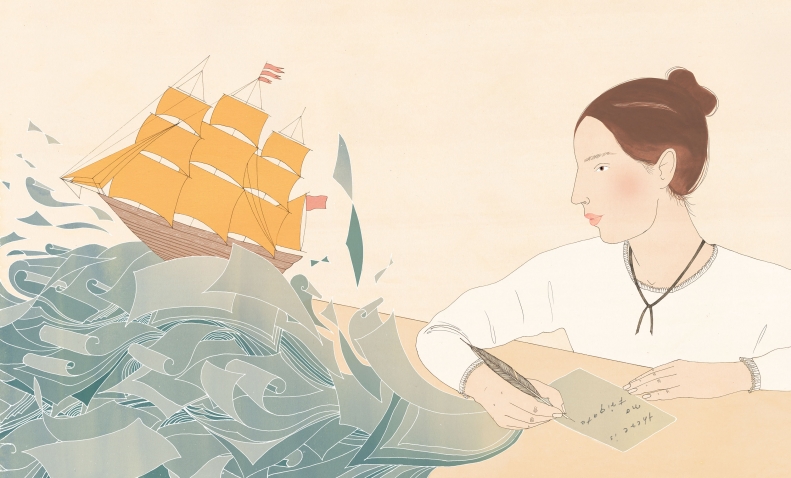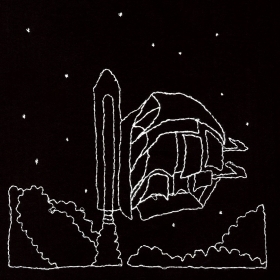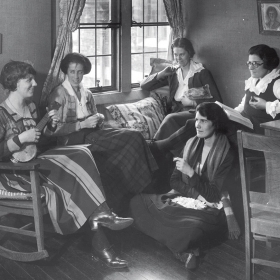Back in November, long before our world was overturned, I sent an email to Dan Chiasson, Lorraine C. Wang Professor of English at Wellesley. The subject line read: “I’m Nobody.”
I was writing to ask if I could audit ENG 357: The World of Emily Dickinson in the spring. I admit it felt a bit audacious to refer to one of Dickinson’s most famous poems.
I’m nobody! Who are you?
Are you nobody, too?
Then there’s a pair of us—don’t tell!
They’d banish us, you know.
How dreary to be somebody!
How public, like a frog
To tell your name the livelong day
To an admiring bog!
But Chiasson replied, “Catherine, with that subject line, how can I say no??”
“I’m Nobody!” is the first poem I remember knowing. Perhaps it actually was the first; perhaps I learned it later, and it effaced other, simpler rhymes. It hardly matters. Because what I remember, what I still embrace as “first poem,” is this Emily Dickinson verse, written in Amherst, Mass., circa 1861, and listed as #288 in the Thomas H. Johnson edition of her poems, published initially in 1960.
So in January, I bought a fresh copy of Johnson’s 770-page The Complete Poems of Emily Dickinson and slipped diffidently into my first college-level English class since the 1970s. Room 338, on the third floor of Green Hall, was chilly that day. Every seat was filled, and we sat elbow-to-elbow and notebook-to-notebook as class began.
Reading my notes from those first weeks, I see that our class explored Dickinson family biography, read excerpts from essays about 19th-century material culture and attitudes to death, about the intellectual life of Amherst, Mass., and about the role of the Civil War in Dickinson’s work. We went online to interpret her handwriting and her use of punctuation—those dashes!—amid the riches of the Emily Dickinson Archive, an open-source website of the poet’s handwritten manuscripts. We speculated about the unsolved mystery of her withdrawal from the world into her bedroom on the second floor of the Dickinson homestead. We began to call her Emily, addressing her as one might a friend rather than with the traditional English-major trope of “the speaker,” or “the narrator.”
And in every single class, we worked as a group—auditors included—reading the poems aloud, dissecting their diction and dashes, their moments of violence, their verbal puzzles, their humor, and their reverence for nature. Together, we were discovering what Chiasson calls “one of the most thrilling and idiosyncratic minds in literature.”
This was heady stuff for me; I could feel long-closed doors in my mind and imagination creaking open. I loved being around the energy and commitment of the students, their willingness to risk their own interpretations of Emily’s work and life. I loved Chiasson’s quirky erudition, his references ranging from the metaphysical poets to pop culture and TV, sometimes in a single sentence.
There was a Tuesday in early March warm enough to allow us to hold class outside, declaiming Dickinson in the amphitheater behind Alumnae Hall. We were looking forward to an April field trip to the Emily Dickinson Museum in Amherst; to a 5 a.m. silent meeting in May on the shores of Lake Waban to listen to the birds’ dawn chorus; to a final gathering at our professor’s house to watch episodes of the cult favorite streaming TV show Dickinson.
But everything changed. In mid-March, we left Wellesley’s campus, and as Emily wrote in #303, “then shut the door.”
Two weeks later, we reconvened. Chiasson fired up Zoom and set up a retro blog for posting poems and commenting on them. Everyone started a journal. ENG 357 was back, stripped down and reconstituted digitally. And we went straight back to the poems. From around the country, seated in bedrooms and on back porches, in kitchens and home libraries and one auditor’s piano studio, we re-entered the world of Emily Dickinson. There was palpable joy in being together again, even digitally.
“I’m sure it has occurred to you that our interiors—our bounded environments, however large or small, and wherever we find ourselves—are suddenly our entire worlds; our predicament or opportunity mirrors Dickinson’s,” Chiasson wrote to the class.
It felt to many of us that Dickinson was teaching us how to live richly within the boundaries of our new world. Reviewing my notes from our very first class, I read that after Emily’s retreat to her room, her letters and poems became her social life. Read “Zoom” for “letters” and that was true for the 22 of us in ENG 357, too.
“I can’t help but feel Dickinson’s language as visceral reminders of the now,” Paige Calvert ’20 wrote in the class blog. “Today feels like I’m putting ‘new Blossoms in /my/ Glass,’ taking out what has sat in my bed with me for two weeks and finding something new, something that wishes to be renewed, rejuvenated. Do others feel similar? This return to Wellesley, although digital, brings me a new sense of calm that I haven’t had in quite a while. The line that honestly made me tear up this morning was: ‘We cannot put Ourself away.’ Because somehow that’s exactly what I feel has happened to me. I feel like I have put away a part of myself for this time of transition, and only now have I woken up and decided to come back, come out, come ‘to Flesh’ once again. It’s really truly remarkable how Emily’s words can continue to have such impact—and now, when we are at home, turning to art, music, literature, poetry, theater to make us feel human—Emily’s poems are some of the best.”
Sara Lucas ’22 wrote, “This time trapped in a smaller world has been teaching me the wonders of knowing one space very intimately. I’m so used to being out and about that I’ve never noticed the small worlds existing right in my childhood bedroom or my parents’ backyard. I think of Emily as I watch a hummingbird drink from our rain-filled eaves, as I track an ant’s path over the brick steps to our front door, or as I contemplate the green leaves of the old oak tree outside my bedroom window. I think of the acuity and wonder with which she took in her limited surroundings, and I strive to do the same.”
When I signed up for ENG 357, I thought I would learn more about the work of a poet I had loved since childhood. Little did I know that I was signing up for a wise, maddening, observant, and challenging guide to our post-pandemic solitude. Take, for instance, this undated poem, #1695:
There is a solitude of space
A solitude of sea
A solitude of death, but these
Society shall be
Compared with that profounder site
That polar privacy
A soul admitted to itself—
Finite Infinity.
In 2016, Chiasson wrote in a New Yorker book review, “This is an extraordinary time to read Dickinson, one of the richest moments since her death. The publication of Envelope Poems and the growing collection of Dickinson’s manuscripts, available online and in inexpensive print editions, coincides with an ambitious restoration of the Dickinson properties in Amherst. …”
How much more extraordinary it would be to read Dickinson in spring 2020, none of us could possibly have foreseen. Yet the slight, evasive, white-clad poet finding her voice in her bedroom in Amherst turned out to be a perfect companion. We were each alone in our rooms, but with Emily we were together.
Catherine O’Neill Grace, a senior associate editor for this magazine, is riding out quarantine at her home in Sherborn, Mass., in the trusty New England company of Emily Dickinson, Robert Frost, and Louisa May Alcott. She and the other ENG 357 auditors and a few students are continuing to meet virtually to read and discuss Emily Dickinson.
The versions of the poems printed here were published in 1891 and 1924 respectively and are in the public domain.








We ask that those who engage in Wellesley magazine's online community act with honesty, integrity, and respect. (Remember the honor code, alums?) We reserve the right to remove comments by impersonators or comments that are not civil and relevant to the subject at hand. By posting here, you are permitting Wellesley magazine to edit and republish your comment in all media. Please remember that all posts are public.